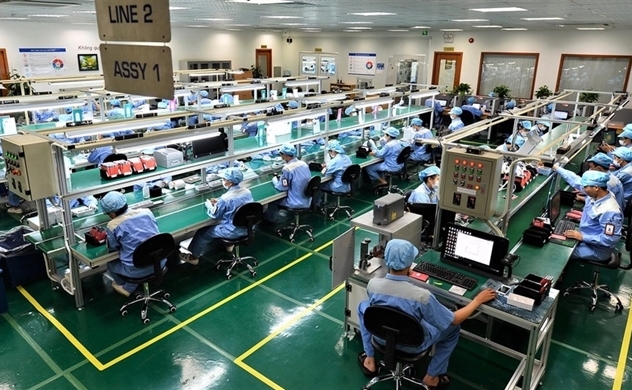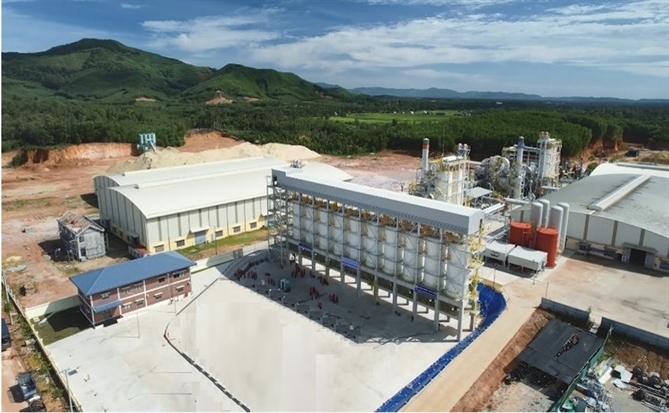Vietnam production sector slides into contraction: S&P Global

Inside an electronics factory in northern Vietnam. Photo courtesy of Vietnam Industry and Trade newspaper.
S&P Global’s latest report shows Vietnam’s manufacturing PMI score of 47.7 in March, down from 51.2 in February. PMI stands for the global firm’s Purchasing Managers' Index, and the boom-or-bust line of 50 separates expansion from contraction.
“Growth in the Vietnamese manufacturing sector was paused in March, after having recovered strongly in the previous month. Output, new orders, and employment were all down amid reports of muted demand,” said Andrew Harker, economics director at S&P Global Market Intelligence.
“The softening of conditions in March will hopefully be just a blip, however, with firms remaining confident in the year-ahead outlook,” he said.
“A sustained period of strengthening cost inflation was brought to an end as pricing pressure was dented by fragile demand, while the recovery in supply chains continued apace."
According to the market information and analysis giant’s report, both total new business and new export orders fell. The drop in overall new orders was the fourth in the past five months, while new business from abroad dipped for the first time in three months.
In turn, backlogs of work decreased at the fastest pace since last November. Matching the picture for new orders, manufacturing production also dropped in March following a rise in February. The reduction was only modest, however. Investment goods production increased, but falls were seen in the consumer and intermediate goods categories.
There were also signs of inflationary pressures easing at the end of the first quarter of the year, S&P Global noted. Although increased supplier charges meant that input costs continued to rise, the rate of inflation was the softest since last October, ending a spell of accelerating cost inflation.
With input prices rising at a slower pace and firms keen to price competitively in order to stimulate demand, output prices increased marginally in March. The pace of selling price inflation was the softest in the current three-month sequence of rising charges, according to the report.
Vietnam, a regional manufacturing hub, reported an 11.9% year-on-year drop in exports to $79.17 billion in Q1 as global import orders are on the decline, the General Statistics Office (GSO) said last Wednesday. The country’s total import spending was estimated at $75.1 billion in the period, down 14.7%.
Industrial production in the first three months shrank by 0.82% from a year earlier, but total domestic retail sales of goods and services rose 13.9% to more than VND1,505 trillion ($64 billion), GSO said. Vietnam posted economic growth of 3.32% year-on-year in the first quarter.
The World Bank, in its April economic update, revised downward its forecast for Vietnam to 6.3% this year, down from 6.7%.
Also on Friday like the World Bank, Singapore’s United Overseas Bank (UOB) trimmed its 2023 GDP growth forecast for Vietnam down to 6%, compared with the 6.6% UOB put a few days earlier.
Source: The Investor

 TIẾNG VIỆT
TIẾNG VIỆT 




_14157616.jpg)












